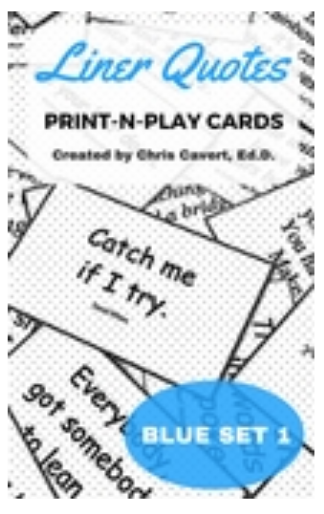After this recent training I was looking through my Chiji Guidebook materials and found this great story from Jennifer Stanchfield of Experiential Tools - Jennifer is an amazing educator, trainer and author working with people all over the world. Here's one of her Chiji stories:
My favorite ways to use the cards are
group consensus methods.
Jennifer Stanchfield
I first came across the cards early on in my training career when I was searching out tools and ideas that would help the recreational therapy students I was teaching in my program at the university hospital. I wanted to show them how to become more comfortable with processing.
The Chiji Cards were introduced in an experiential education magazine as a tool for novice facilitators and Steve Simpson and I connected around that article. [Steve is one of the creators of the cards and the co-author, with me, on, The Chiji Guidebook: A Collection of Experiential Activities and Ideas for Using Chiji Cards]
When I started using the cards with my own groups I found that that they weren’t just a “tool for beginners." As a seasoned facilitator I appreciated the depth of conversation and insight that came out of participant’s connection to the metaphoric images.
I used the cards successfully in my small groups of adolescents and family groups at the hospital. Because they had become one of my favorite tools I of course carried them with me to my classroom settings as well. When I moved to these larger groups I couldn’t use them in the same way I had at the hospital, as it was impractical, due to time constraints, for 24 students to pick individual cards and share in a class session. So one day after a group challenge in the physical education classroom I tried spreading out the whole deck of cards on the gym floor and asked the whole group of students to come to agreement on one that represented what they achieved together.
I became hooked on this method after seeing the group drawn in by the cards and treating processing as an engaging group problem rather than “that boring thing you do after the fun activity”, not to mention the rich dialogue that occurred as the students discussed coming to consensus on one card. The student’s shared profound insights about the cards and their connection to the activity/learning as they came to consensus. It was if they were unaware that they were processing.
Since that time this has become my method of choice when using the cards. After an activity/important moment/ end of session, I just ask the group to come to consensus on one card/object that best represent their experience as a group, the strengths of the group, or something they have achieved together.
All the best,
Chris Cavert, Ed.D.







 RSS Feed
RSS Feed